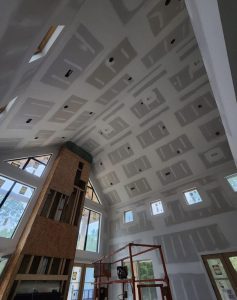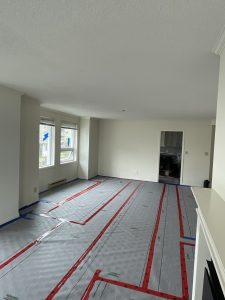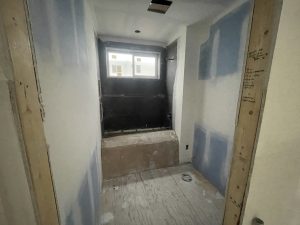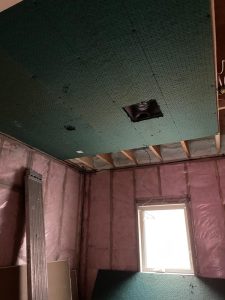Soundproofing with drywall can be a highly effective way to reduce noise in your home or office, but several common mistakes can undermine your efforts. Avoiding these pitfalls will help you achieve the best possible results. This comprehensive guide will walk you through these mistakes and how to avoid them, ensuring you maximize your soundproofing efforts.
1. Not Using the Right Type of Drywall
Mistake: Using standard drywall instead of specialized soundproof drywall.
Solution: Standard drywall is not designed to block sound effectively due to its relatively low density. For better soundproofing results, invest in soundproof drywall, such as QuietRock or similar products. These types of drywall are denser and often incorporate layers of viscoelastic polymers that significantly improve sound attenuation. Although more expensive than standard drywall, the performance benefits are substantial, making it a worthwhile investment for effective soundproofing.
2. Ignoring the Importance of Mass
Mistake: Assuming one layer of drywall is sufficient.
Solution: Soundproofing is based on the principle of adding mass to block sound waves. One layer of drywall may not provide adequate sound insulation. For optimal results, use multiple layers of drywall with a sound-damping compound like Green Glue between them. Green Glue is a viscoelastic compound that converts sound energy into heat, significantly reducing sound transmission. By applying two or more layers of drywall with Green Glue, you increase the mass and damping properties of the wall, effectively reducing both airborne and impact noise.
3. Poor Sealing and Gaps
Mistake: Leaving gaps and cracks around the drywall, which allows sound to pass through.
Solution: Even small gaps and cracks can significantly compromise your soundproofing efforts by allowing sound to pass through. To prevent this, meticulously seal all edges, gaps, and seams with acoustic caulk. Pay special attention to areas around electrical outlets, light switches, and corners, as these are common places for sound leakage. Acoustic caulk remains flexible after drying, maintaining a seal as the building materials expand and contract over time.
4. Skipping Resilient Channels
Mistake: Attaching drywall directly to studs, which can transmit vibrations.
Solution: Directly attaching drywall to the studs creates a rigid connection that allows sound vibrations to pass through the wall structure. To break this path, use resilient channels or sound isolation clips. Resilient channels are metal strips that create a gap between the drywall and the studs, reducing the transmission of sound vibrations. Sound isolation clips achieve a similar effect but provide even better decoupling. These methods help to isolate the drywall from the framing, reducing the amount of sound that can pass through the wall.
5. Neglecting Other Sound Paths
Mistake: Focusing solely on the walls and neglecting other paths for sound transmission, such as doors, windows, and ceilings.
Solution: Comprehensive soundproofing requires addressing all potential sound paths. Doors and windows are significant weak points in a soundproofing system. Install solid-core doors, which are denser and more effective at blocking sound than hollow-core doors. Use weatherstripping to seal gaps around doors, and consider adding a door sweep to block the gap at the bottom. For windows, use acoustic curtains or inserts, or consider replacing them with soundproof windows. Don’t forget to soundproof ceilings and floors if noise transmission is a concern in multiple directions, using similar techniques and materials as for walls.
6. Underestimating the Importance of Insulation
Mistake: Thinking drywall alone will suffice for soundproofing.
Solution: While drywall plays a significant role in soundproofing, it should be complemented by soundproof insulation within the wall cavity. Materials like mineral wool or fiberglass are excellent choices for soundproof insulation. These materials are dense and can absorb sound waves within the walls, reducing the overall noise transmission. Properly insulating the wall cavity can make a significant difference in the effectiveness of your soundproofing efforts.
7. Incorrect Installation of Soundproofing Materials
Mistake: Improperly installing soundproofing materials, such as using the wrong type of screws or not following manufacturer guidelines.
Solution: Proper installation is crucial for achieving effective soundproofing. Follow manufacturer instructions carefully when installing soundproofing materials. Use the recommended screws and techniques to ensure that the soundproofing materials perform as intended. For example, when using Green Glue, apply the correct amount and allow it to cure properly. Typically, two tubes of Green Glue per 4×8-foot sheet of drywall are recommended. Also, avoid compressing insulation materials too tightly, as this can reduce their effectiveness.
8. Overlooking Electrical Outlets and Switches
Mistake: Not soundproofing around electrical outlets and switches.
Solution: Electrical outlets and switches are common weak points in soundproofing efforts because they create gaps in the wall that sound can pass through. To address this, use putty pads designed for soundproofing to cover the back of electrical boxes. Putty pads are easy to apply and can significantly reduce sound leakage through these small openings. Additionally, ensure that any gaps around the outlets and switches are sealed with acoustic caulk.
9. Inadequate Planning and Design
Mistake: Not planning the soundproofing project thoroughly, leading to incomplete or ineffective soundproofing.
Solution: Take the time to plan your soundproofing project in detail. Consider all aspects of the room, including potential sound paths, the best materials and techniques to use, and the overall design. Create a comprehensive soundproofing plan that includes all necessary materials, tools, and steps. If you are unsure about any aspect of the project, consult with a soundproofing expert to ensure that your plan is effective and achievable.
10. Underestimating the Cost and Effort
Mistake: Assuming that soundproofing is a quick and cheap fix.
Solution: Be prepared for the time, effort, and cost involved in properly soundproofing a room. Effective soundproofing requires quality materials and meticulous installation, which can be both time-consuming and expensive. Set a realistic budget for your project and allocate sufficient time to complete each step properly. Cutting corners or opting for cheaper materials can result in subpar soundproofing, ultimately wasting your investment.
Additional Tips for Effective Soundproofing
Double Stud Walls: For superior soundproofing, consider building double stud walls, which create an additional air gap between the walls. This method provides excellent decoupling and significantly reduces sound transmission.
Staggered Stud Walls: Staggered stud walls involve alternating the placement of studs on either side of the wall plate, creating a more complex path for sound waves to travel through and reducing direct sound transmission.
Soundproof Flooring: In addition to soundproofing walls, consider addressing floor noise by using soundproof underlayment, carpeting, or sound-absorbing floor mats.
Acoustic Panels: Installing acoustic panels on walls and ceilings can further enhance sound absorption and reduce noise within a room.
White Noise Machines: In areas where complete soundproofing is not feasible, white noise machines can help mask unwanted sounds and improve acoustic comfort.
By avoiding these common mistakes and following best practices, you can ensure that your drywall soundproofing project is successful and that you achieve the desired reduction in noise transmission. Proper planning, quality materials, and attention to detail are key to effective soundproofing. With the right approach, you can create a quieter, more comfortable living or working environment.






